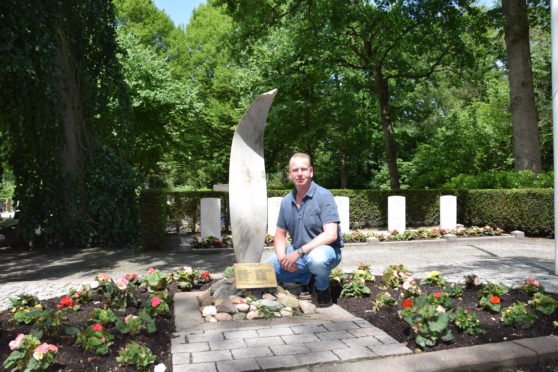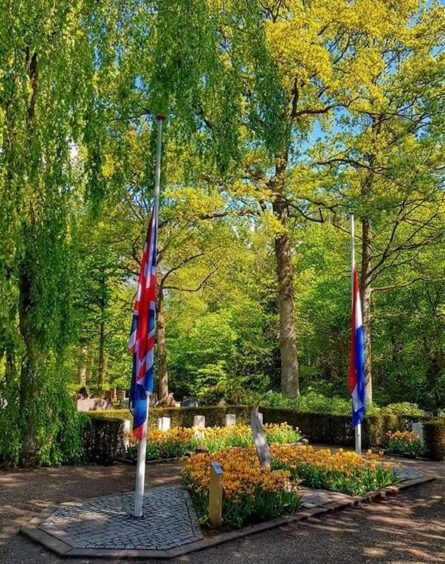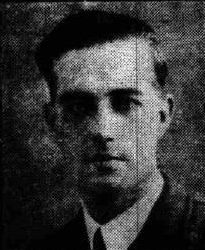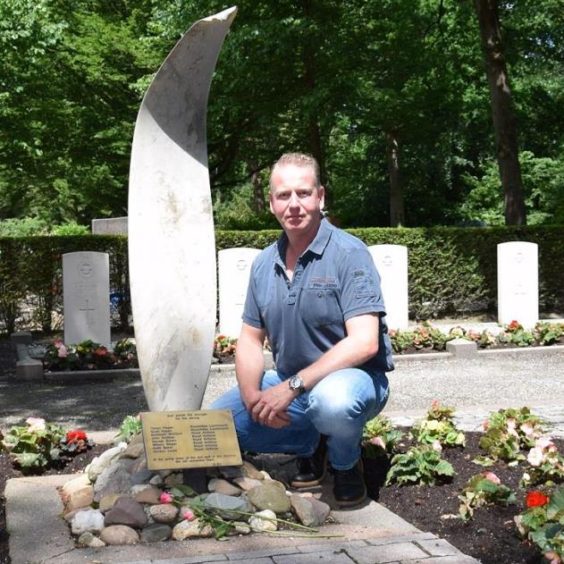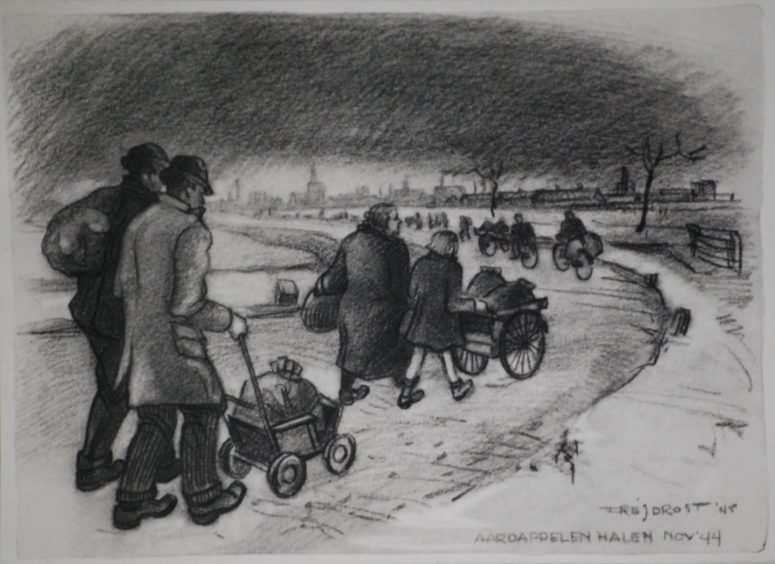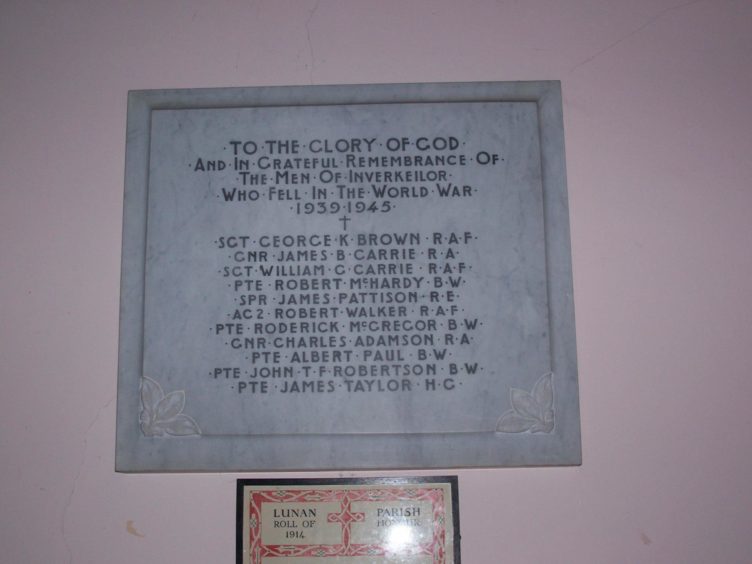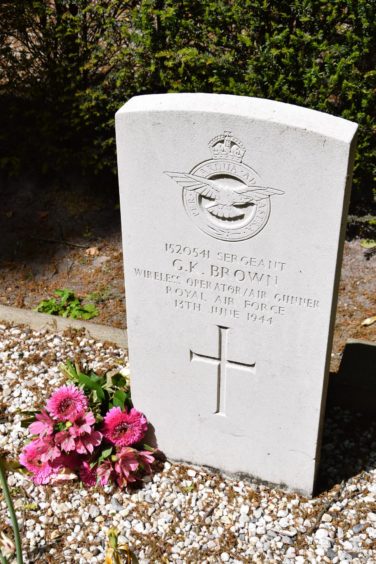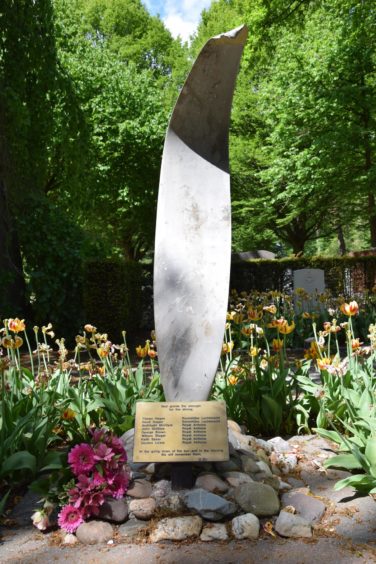Dutch villagers in central Holland are keeping the memory of two forgotten north-east airmen alive after 76 years.
Sergeant George Kennedy Birse Brown, 31, from Kinnell in Angus and Flight Sergeant Gordon Florence Lewis, 23, from Aberdeen were killed when their burning plane broke into pieces and came down in a field in Nunspeet.
Oil refinery attack
They were the only Scots in the seven crew on board the Lancaster MK-II from 514 Squadron named ‘Maggie’ which had taken off just after 11pm from RAF Waterbeach in Cambridge.
Maggie was part of a 303-strong bombing stream attacking a refinery at Gelsenkirchen in Germany to disrupt vital oil production on June 12 1944.
#OTD in 1944,105 & 109 Sqns combined to mark 6 targets, including a synthetic oil plant at Gelsenkirchen and the railway station at Arras (photo). "Technical issues" meant that only 20 of the 42 #Mosquito bombers were successful. Find out more here: https://t.co/lX9n7k1NPk pic.twitter.com/OPfbfVKDfW
— The Peoples Mosquito (@PeoplesMosquito) June 12, 2020
Air warfare strategists had argued that these synthetic oil plants should be the very top priority.
Post-war analysis suggested that their comprehensive destruction across Germany might well have hastened the end of the war.
Maggie was damaged by anti-aircraft fire in Gelsenkirchen and she flew a bit slower which made her easy prey for a German night fighter.
Lieutenant Ernst-Ewald Hittler shot Maggie down in Nunspeet around 2am which was his fourth kill of the Second World War.
The tail broke off the aircraft after it was hit and it came down in a field of oats.
Tail gunner Sergeant Keith Russell Baker also ended up there and his body was found by children the next morning who were going to school.
Sergeant Brown, Flight Sergeant Lewis and Sergeant William Edward Steger came down in the burning fuselage.
They could not be saved and their bodies were so badly burned that it was difficult to find out who they were.
Flight Sergeant Lewis was identified after the war because he was wearing a special watch which only navigators received from the RAF.
This was how they were 100% sure that it was the Aberdonian’s body with the help of the Red Cross and the RAF.
Dutch Resistance
Three crew members got lucky and parachuted clear.
Flight Engineer Sergeant Peter Cooper broke his leg when he landed in a tree and was arrested.
Sergeant Harry Bourne, the bomb aimer, was rescued and taken care of by local residents but wanted to go back to the plane and was also arrested by the Germans.
They were sent to a prisoner-of-war camp in Poland and survived a walk of two weeks between Stalag VII and Stalag III before they returned to England in May 1945.
Pilot Officer Derek Anthony Duncliffe also evaded capture and was hidden in the forest by the Dutch Resistance until Holland was liberated.
He also returned home safely in 1945.
Wessel Scheer, 47, said the four crewmen who died are not forgotten in Nunspeet today where they lie in a cemetery just 500 metres from the crash site.
The Dutch never forgot who liberated them,” said Mr Scheer.
“The last winter of the war had been horrible and it was the Dutch Famine.
“The relief was enormous when finally on the 5th of May 1945, the Netherlands was liberated.
“For sure we know who liberated us at the end; the British, Americans, Canadians and even some Polish forces.
“There is a strong feeling to remember all the war casualties every year on May 4 (where the Dutch remember all victims).
“In the village of Nunspeet there is also a service on Remembrance Sunday.
“About 350-400 people attend at the Maggie graves at the cemetery Nunspeet Oost which is a quite lot for this small town.
“We have had several crashes of British aircraft in this area and they are all being remembered.
“However, from the Maggie crash not so much is known.”
Family tragedies
Flight Sergeant Lewis was the son of James Fowlie Lewis and Bessie Agnes Lewis nee Ogg and lived in Ashvale Place in Aberdeen.
Before the war he was an apprentice slater.
Sergeant Brown was born in Wester Braikie Farm, Kinnell, which is close to Inverkeilor, and was the wireless operator and gunner on board of Maggie.
He was the son of David Small Brown and Maggie Mary Scott.
He had 10 brothers and sisters and worked as a baker in Edinburgh before the war.
Sergeant Brown is commemorated in the Inverkeilor Kirk.
His brother who died in World War One is commemorated outside this same church.
Mr Scheer said: “It must have been one of the few families who lost a son in World War One and World War Two.
“A third son returned back from World War One disabled.”
Mr Scheer, who lives in Nunspeet, has a special interest in World War Two and wants to find out more information about the north-east airmen.
“When I started we only had one real face which was the one of Pilot Officer Duncliffe,” he said.
“Of all the other six there was hardly anything known.
“Of some I know a lot.
“To get information on Brown and Lewis appeared to be difficult.
“I want to know more.
“Having the bigger story and having their faces makes commemorating easier.”
Mr Scheer started the project after stumbling upon the four graves when he moved to the village but he found the information was quite limited.
“This triggered me to find out more,” he said.
“It is my own private little project.
“The crew is being commemorated every year on several occasions.
“Many people do visit these commemorations.
“They know something about a crash in 1944.
“I want them to know more about the people and the history they commemorate.
“The crash is one thing but I try to go a bit further.
“I try to get to know the crew a little bit and give them a face.”
School stories
Mr Scheer, who lives close to where the plane came down, said all his information is being shared with the council of Nunspeet and local historians.
“At every monument is a pillar placed with a QR code on it,” he said.
“Scanning the code will bring you to the website with all the related information of that specific monument.
“Our goal is to have as much reliable information available as possible.
“Personally I have been always interested in these stories.
“This one has also got under my skin.
“It is very close to me.
“My wife always says ‘it is like an old soul is living in you’.
“On this crash not so much is known.
“We have to gather all the information now before it gets lost in order to keep it alive in the future.”
He said the image he discovered of Flight Sergeant Lewis moved him to tears.
“Sometimes I find some sad stories in this big sad story,” he said.
“The Brown family lost a son in World War One and lost a second son in World War Two.
“When I find relatives I like to let them know that we take good care of the graves.
“The Commonwealth War Graves Society and the village of Nunspeet are doing a great job.
“Volunteers are doing their utmost best on May 4, May 5 (Liberation Day in the Netherlands) and Remembrance Sunday.
“We teach at schools and tell the children about history including this story involving the airmen from the north-east of Scotland.”
Mr Scheer plans to put together a website to tell the story and he is now looking for relatives of the Brown and Lewis family to get in touch with him.
Anyone with information can reach us at gstrachan@thecourier.co.uk
